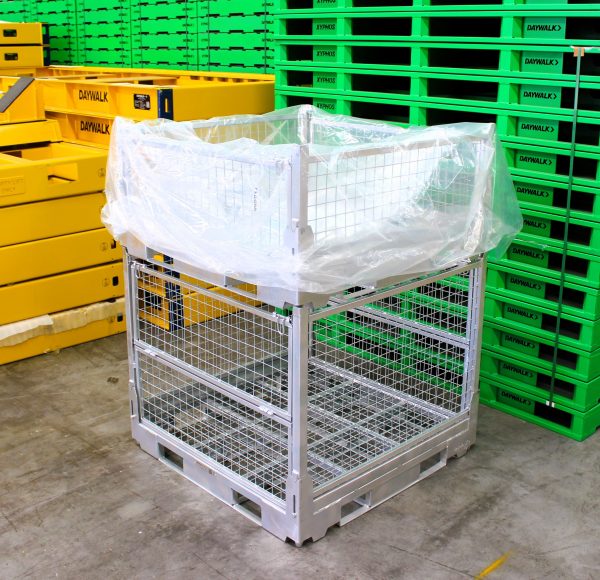Before getting into steel and zinc cages, we need to first look at the differences between galvanised steel and zinc-plated steel.
Galvanised steel is iron or steel that undergoes a process called hot-dip galvanising. This process applies a protective zinc coating by dipping the metal in a bath of molten zinc. Heat applied reaches between 830 and 870 degrees Celsius, enabling the zinc to bond easily with the steel. Galvanisation is low-cost, can be easily applied, and has a long maintenance-free service life. Galvanised steel is suitable for both indoor and outdoor applications. You can tell galvanised steel by its rough finish.
Zinc plating is sometimes called electroplating. This is the process wherein zinc is applied by being immersed in a cold chemical solution of zinc on the metal and uses currents of electricity to apply the layer. The zinc applied is a thinner coating compared to hot-dip galvanising. Thus, zinc is unsuitable for outdoor applications. However, for indoor applications, its bright colours and shiny surface make zinc more aesthetically appealing.
Galvanisation and zinc plating are both meant for rust protection. However, since zinc plating leaves a thinner coating, it is not as rust resistant as galvanised steel.
Zinc Plated Steel
Zinc plating is more suitable for superficial protection indoors such as for storage in warehouses, so long as the indoors is in a dry environment. This is the reason why more galvanised metal cages are manufactured compared to zinc plated steel cages.
Zinc plating cannot withstand sudden changes in temperature, and the zinc coating can peel off when the temperature reaches 200 degrees Celsius.
Zinc-plated steel needs to be cleaned using an alkaline detergent then treating the metal with acid to remove any rust, an expensive and time-consuming process.
Zinc plating coating is only around 3 microns thick, providing less protection against rust and corrosion.
Zinc plating is favourably suited for coating nuts, bolts, washers, metal stampings, automotive parts, fabricated parts for industrial applications, and sheet metals due to its smooth finish.
Advantages of Galvanised Steel
Galvanised steel can be used for any outdoor application, whether the environment is hot or wet or cold. Changes in temperature do not affect galvanised steel, and the coating will not peel even if the temperature exceeds 200 degrees Celsius.
Galvanised steel can be cleaned by just hosing it down and using ordinary cleaning solution or detergent.
Galvanised steel coating can be around 50 microns thick, offering better protection against rust and corrosion.
Galvanised steel is well suited for a multitude of materials in the construction industry, large industrial structural shapes, vital metal parts for equipment, and metal cages.
Based on these comparisons, we can thus safely say that there are far more advantages in using galvanised steel cages than zinc plated steel cages. When it comes to transporting materials, products, parts, and other cargo by land, sea, or air, galvanised metal cages are more durable and can withstand more weight and extreme weather based on their make alone.
To learn more about sturdy and durable galvanised steel cages of all types and designs, visit Daywalk at their website, https://staging.daywalk.com/. Daywalk is the leader when it comes to preserving and protecting your cargo and avoiding wastage.





